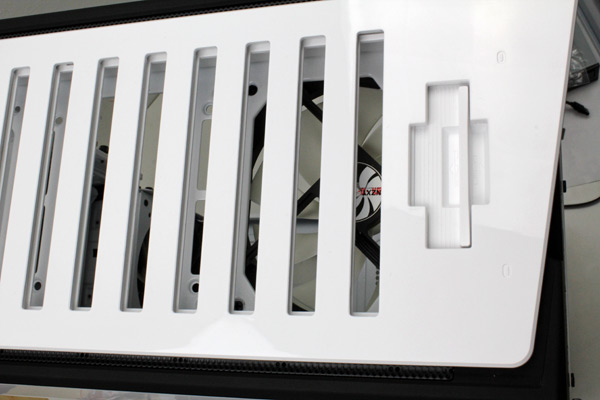Index
Switch 810 measures 595mm x 235mm x 585mm. This is a high tower computer case and it weighs in at 9.1 kg. The white color scheme looks pretty appealing. Furthermore, NZXT used quality glossy plastics, so it's quite hard to tell what's made of plastic and what's made of metal, especially at a glance. We checked of course and the front and top panels are made of plastic.
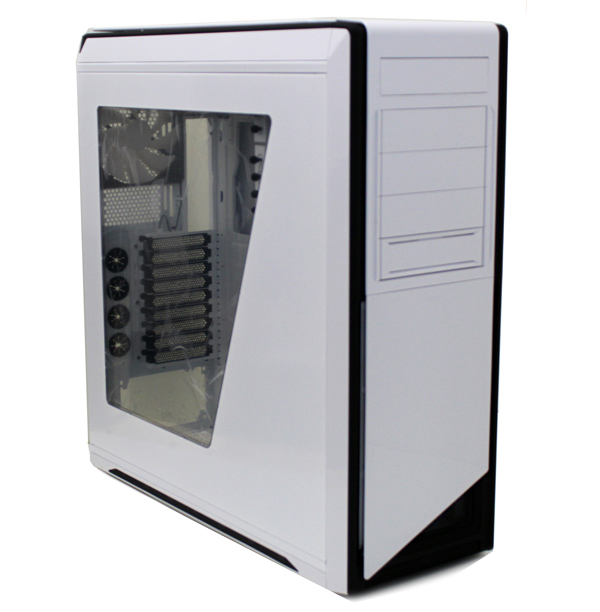
Glossy plastic panelling across the top and the front is stylish but very sensitive to scratches. Thankfully, NZXT opted on black rubber finish around its top and front panels which not only makes it look good but saves the edges as well.
In general the Switch 810’s front panel is quality made with a lot of features. Like with all better cases, there’s no need to take the entire panel off just to mount a DVD drive – all you need to do is remove the bay covers and you’re good to go. Out of the box, Switch 810 will take three 5.25” optical drives, whereas the fourth 5.25'' serves as a hot-swap unit for 3.5''/2.5'' drives. Naturally, you can take the hot-swap unit out and use the bay for any 5.25'' device. At a glance, Switch 810 looks like it has 5 bays on the front panel, but the top one is actually the I/O panel.
I/O is hidden behind the flip-up cover. Here we have two USB 3.0, two USB 2.0, an SD memory card reader, one audio and one mic jack, reset switch and LED toggle switch for turning on and off two LEDs that illuminates the rear I/O panel. The LEDs on the rear panel are an unusual feature, but they sure came in handy in the dark.
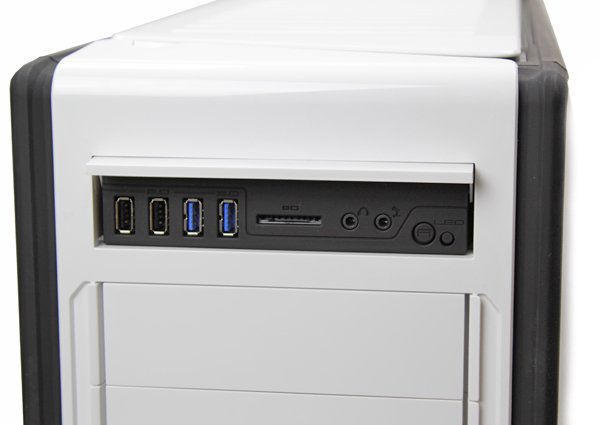
NZXT could've come up with a better flip-up cover. The picture below shows that you literally have to lift the cover with your fingers, which is not easy. In fact, you'll have to first push the top part inside quite deep before you can grab the cover. In comparison, the flip-up on Corsair's Obsidian 800D is very similar but is opened downwards, making it much easier to open it.
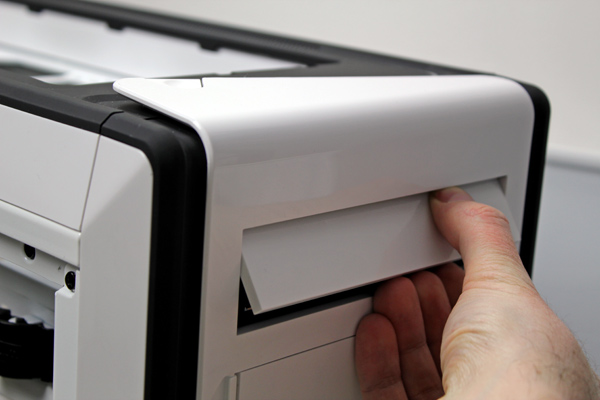
Removing the filter on the front panel couldn't have been simpler - a slight push on the top will do - you'll hear a click and the filter can be removed.
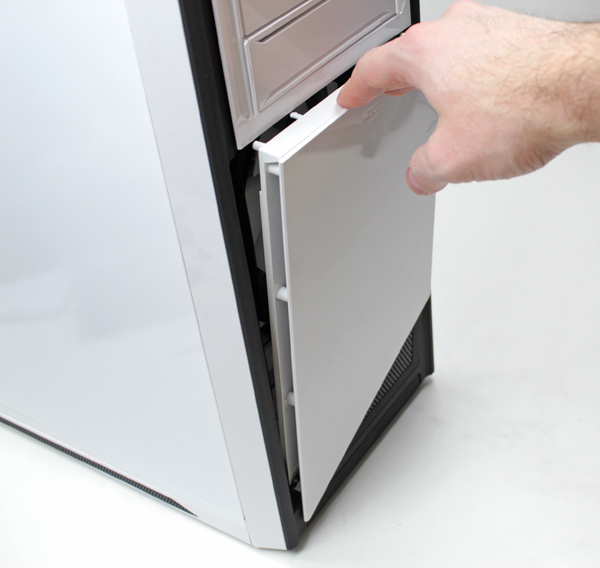
The front panel has been designed to fit into the glossy look. Only after checking out the case from the sides will you see that there are air inlets between the black rubber-coated edges and filter masks.
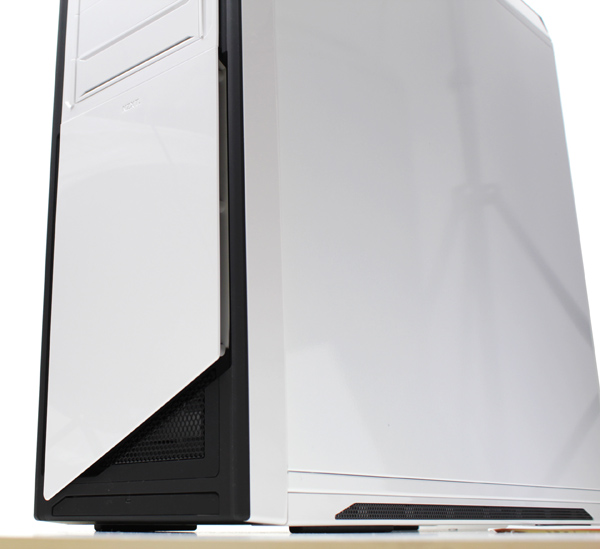
One 140mm fan is standard on the front panel (it serves as intake fan) while the second fan is optional.
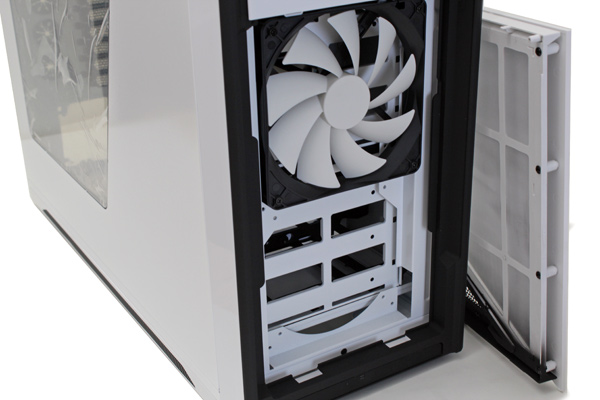
The picture below shows the mechanism that's used for air filters (one on the front, one on top and two bottom filters). The mechanisms are made of plastic so it would've been a nice touch if NZXT offered a spare one.
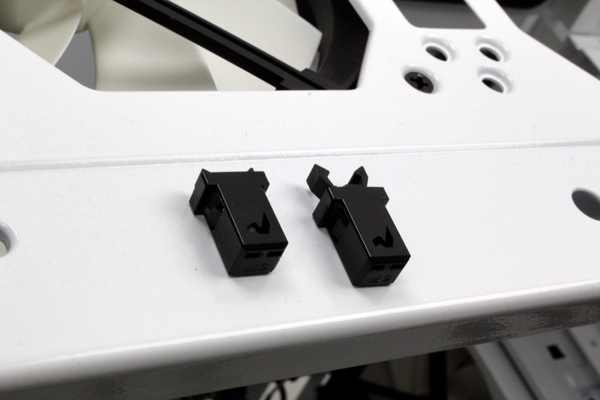
On the bottom of the case are two filters and they can be easily removed. A slight push inwards will release the mechanism and the filter will slide out enough for you to grab it and take it out.

The On/Off button is on the top panel (picture below). Next to it is the HDD LED and Power LED.
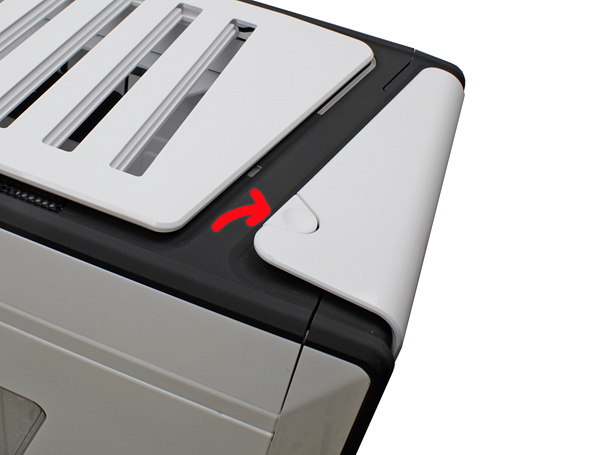
The top panel has a mechanism that allows you to close the air ventilation ports when the computer isn’t on and keep the dust out. The idea is for users to choose between maximum airflow and silence.
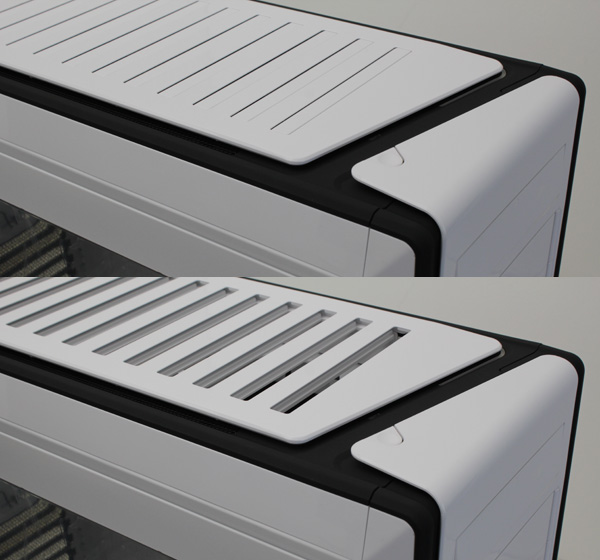
The air ventilation ports can be opened or closed via the lever on the back of the top panel.
